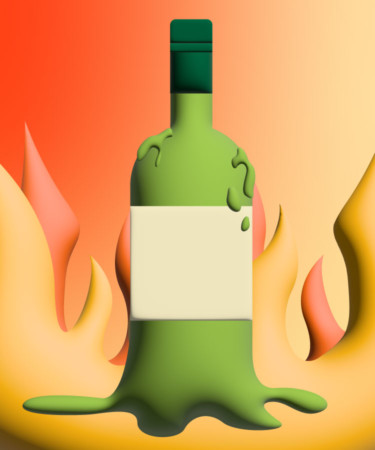The average wine drinker likely thinks of storage temperature in a binary framework: Whites go in the fridge, while reds stay at room temperature. But just five degrees may be the difference between a spoiled bottle and a well-preserved one, and storing your wine outside the Goldilocks window could have adverse effects on taste and quality.
Wine, like any other substance made from organic matter, can spoil at too high a temperature, making controlled storage all the more crucial, says Nadine Brown, sommelier and founder of At Your Service, a company offering tailored wine services in Washington, D.C.
While the optimal temperature for long-term storage of reds and whites is 55 degrees, Brown says, it’s most important that you don’t let storage temperature surpass 70 degrees. “At that [temperature], wine will start to heat up and [become flat], losing those aromatics and profile,” she says. Leaving a bottle in a hot car, for example, could accelerate the production of certain chemical compounds, some of which can produce an unsavory taste and smell.
Higher temperatures can also compromise the seal of the bottle. “Corks expand and can be pushed straight through the foil at times,” Brown adds. “This can allow oxygen into the wine — another killer of its unique flavor profile.”
Chilling your bottle in the fridge is OK, but Brown doesn’t recommend refrigeration for long-term storage. Above all, it’s important to keep your wines at a constant temperature. “A few degrees here and there is not much of a big deal, but not 45 to 80 then down to 35 degrees.”
